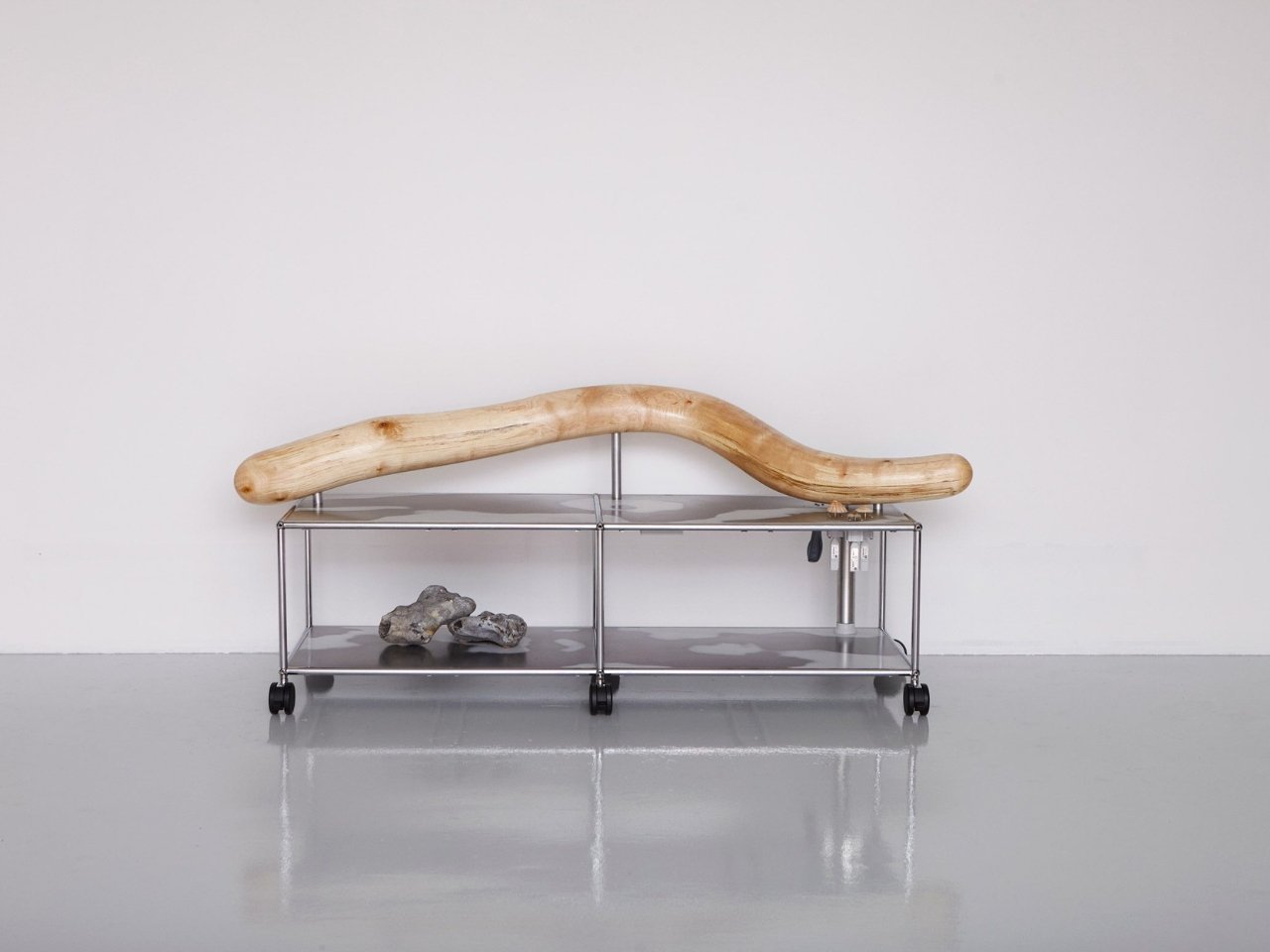The USM Haller system, launched in the late 1960s, is celebrated for its chrome‑plated steel frame and ball‑connector that lets shelves, desks and storage units be re‑configured at will . For the 2025 Designers’ Saturday biennale in Oslo, the theme “Repurpose” inspired a group of ten Norwegian designers to reinterpret the system using reclaimed and self‑sourced materials.
Martin A. Andersen, founder of Studio M3, began the project by rescuing a batch of old USM filing cabinets from the former Kreditkassen headquarters. The sturdy frames were still functional, providing a ready‑made skeleton for new ideas . Andersen’s own contribution consists of two benches wrapped in reclaimed timber, climbing rope woven into a macramé back, tall grass inserts and a transparent balloon pump that adds a light, playful accent.
Designer: Studio M3
Bård Arnesen took a different route, covering his re‑imagined Haller piece with large tapestry blankets. Rather than cutting or stapling the fabric, he left the blankets whole so they can be reused as wall hangings after the exhibition. Kjetil Smedal transformed a standard Haller unit into a functional record player. He applied a fibreglass shell over the frame and incorporated mass‑timber panels to create a resonant acoustic enclosure, turning the modular furniture into a retro‑style audio device.
Lloyd Winter’s entry looks as if it has been abandoned for years. Weathered paint, rusted bolts and a patina of dust give the piece a deliberately aged appearance, prompting viewers to consider the life cycle of objects and the beauty of decay. Josefin Johansson contributed a sleek bench that combines the classic USM geometry with a mix of reclaimed oak slats and soft upholstery, offering a comfortable seating option that still respects the system’s clean lines.
The exhibition also featured work by Bjarte Sandal, Hunting & Narud, Mic Poy, Marianne Skarbøvik, Stian Korntved Ruud and others, each employing materials such as surplus acrylic tiles, reclaimed metal, and even repurposed office furniture components. All eleven pieces served as audience seating during the talks programme, demonstrating how modular design can be both functional and expressive.
Beyond the visual spectacle, the project highlights a broader shift in contemporary design toward circularity. By reusing the original steel frames and pairing them with locally sourced or salvaged materials, the designers reduce waste while showcasing the adaptability of a system that was originally intended for corporate offices. The modular nature of USM Haller makes it an ideal platform for such experiments; components can be detached, re‑assembled and combined with new surfaces without compromising structural integrity.
Visitors praised the diversity of approaches, noting that the exhibition offered “inspiration” and “playful solutions” that could be applied in everyday interiors . The success of USM Haller Re‑framed suggests that classic mid‑century systems still have relevance today, especially when designers embrace up‑cycling and local craftsmanship. As sustainability becomes a central concern for consumers and manufacturers alike, projects like this may encourage more brands to open their archives for reinterpretation, turning legacy products into fresh, environmentally conscious statements.
The post USM Haller Re-framed revives classic modular system first appeared on Yanko Design.

